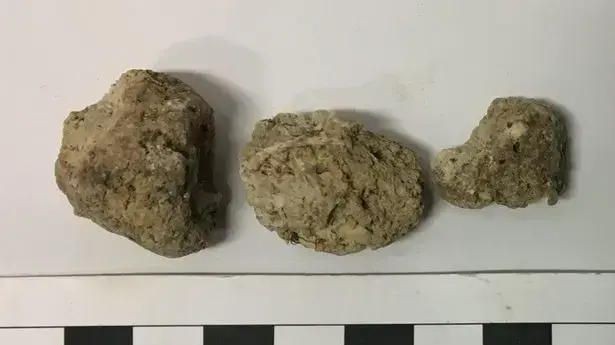The 5,000-year-old Stonehenge secrets were revealed in fossilized poop
Stonehenge's mystery has confused archaeologists for decades, but now the picture of the people who visited or built the site thousands of years ago is slowly becoming clearer.
Not to be missed
25/05/2022
Wednesday, 25 May 2022, 23:22 Updated: Saturday, 25 June 2022, 23:22
Share on Facebook
Share on WhatsApp
Share on Twitter
Share on Email
Share on general
Comments
Comments
Stonehenge served as an ancient art gallery?
(Editing: Gadi Weinstock, Narration: Aviv Abramovich)
Stonehenge is a prehistoric monument dating back at least 5,000 years to the Salisbury Plain in Wiltshire, England, about 5 miles north of Salisbury.
It consists of a shallow circular canal on the inner bank of which is built a dirt embankment that surrounds a large circle of standing stones with five horseshoe-shaped trillions in the center.
Archaeologists believe that this fossil was created about 2,000 to 3,000 years BC.
The culture that built Stonehenge did not leave behind any written language, and it is much older than the early cultures that left behind any inscriptions.
Many issues related to Stonehenge are still controversial.
For generations, researchers from all over the world have tried to understand what is behind the wave of prehistoric giant stones and the multiplicity of theories is sometimes referred to as the "Stonehenge mystery".
Now it seems that at least some of the secrets surrounding the Stonehenge mystery may finally be solved after archaeologists discovered an ancient 'poop'.
Good to know (promoted)
A must in every home: this is how you cool the summer in style
Served on behalf of colder
Prehistoric feces found in Stonehenge (Photo: Screenshot, Lisa-Marie Shillito)
Archaeologists excavated and found at the site coprolite - fossilized feces, which suggests that the ancient British lived on a diet of internal parts and internal organs of animals.
Studies have also shown that they gave their food leftovers to dogs.
The feces found contained threaded eggs (flatworms) which are a parasite that enters the body from eating uncooked meat, indicating that the person who excreted the feces ate the internal organs of the cattle such as the heart, kidneys, liver and tongue.
The findings revealed that residues of this parasite-promoting food were also given to dogs, as they too were infected.
Which proves the fact that dogs have been man's best friends for thousands of years and have been domesticated - indeed, ancient traces of German Shepherd dogs have been found in the past near Stonehenge.
The lead author of the study, Dr Pierce Mitchell of the University of Cambridge, said: "This is the first time that intestinal parasites have been found in Britain in the Neolithic (late Stone Age) period, and finding them in the Stonehenge area is really something exciting.
The type of parasites we found are consistent with previous evidence of winter feeding of animals during the Stonehenge construction
. , Or 'coprolite', discovered in the Wiltshire community that has been preserved for over 4,500 years.
They found evidence to suggest that the people who lived there ate raw or uncooked lungs or liver from an animal that had already been infected with the disease.
A research partner, Dr. Evelina Ansteiso, also of the University of Cambridge, said: "Finding capillary worm eggs in human and canine coprolytes indicates that humans ate the internal organs of infected animals, and also gave the remains to their dogs."
Dr. Mitchell said, "Because capillary worms can infect cattle and other ruminants, the cows appear to have been the most likely source of the parasite's eggs."
During the excavation, the team also uncovered pottery and stone vessels inside the main garbage pile, and more than 38,000 animal bones, about 90 percent of which were pigs.
Only less than 10 percent were cow bones, with previous analyzes of cow teeth found in the Dorrington Walls indicating that some of the cattle grazed more than 100 miles away.
Previous studies indicate that the meat of cows was mainly minced for the purpose of preparing dishes, and their bone marrow was removed, based on the slaughter patterns on their bones.
The sheer number of pottery and animal bones suggests that the walls of Dorington were a place of food and habitation, but since there is very little evidence that people ate or lived there, Stonehenge's goal still remains a mystery.
Tourism
news
Tags
Poop
Stonehenge
Fossils















